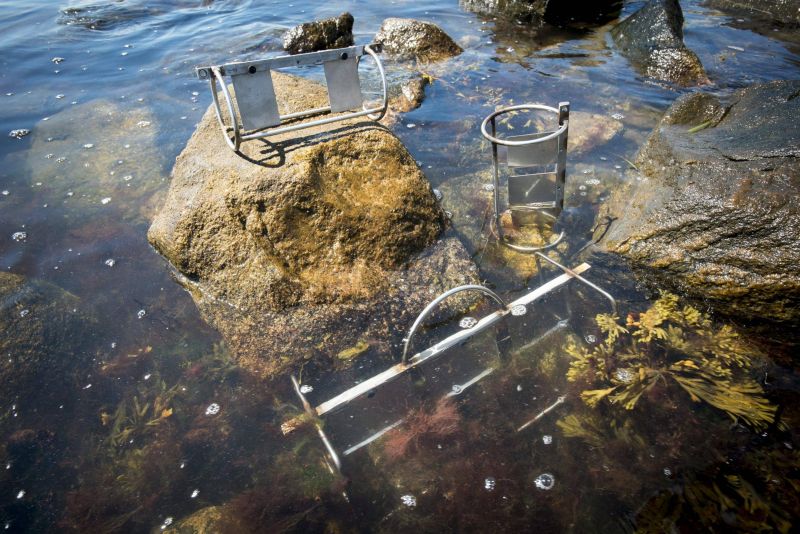New Device Improves Measurement of Water Pollution
Published on by Water Network Research, Official research team of The Water Network in Technology
UConn researchers have developed a device that makes it easier to measure contaminant levels in water.
With help from UConn’s National Science Foundation Innovation Corps program, Accelerate UConn, marine geochemist Penny Vlahos and graduate student Joe Warren are now well on their way to commercializing their technology.
Access to clean water is a major concern for nations around the globe. The new device can measure pollution in oceans, lakes, and rivers, and even in the home.
 A passive sampling device for improved detection of toxic organic pollutants. (Sean Flynn/UConn Photo)
A passive sampling device for improved detection of toxic organic pollutants. (Sean Flynn/UConn Photo)
“I was frustrated that we weren’t measuring contaminants as often or as well as we should, just because it was too labor-intensive and costly,” says Vlahos.
“This device lets us test more bodies of water quickly, easily, and inexpensively, and yields results that better reflect the overall situation. The potential environmental impact is huge.”
Currently, if the quality of a body of water needs testing, a large sample is collected – between five and 20 liters of water – and is then transported to a lab for analysis.
This process, known as “grab sampling,” is labor-intensive and can be prohibitively expensive. As a result, small-scale testing by citizens who want to measure contaminants in a local stream or in their private wells isn’t feasible.
In contrast, Vlahos says her technology is so easy a child could do it. In fact, the device doesn’t require collecting a water sample at all, because it uses a process called “passive sampling.” The small, ecofriendly sampling device is placed directly into the body of water being tested, where it stays for a few hours and is then removed. Once back in the lab, it takes a little over two hours to conduct a full analysis of the water’s target contaminant levels.
Another important feature of the new technology is that it provides continuous sampling over time, which isn’t possible with grab sampling. Since the device remains in the water, it gives a more representative picture of an aquatic environment’s overall health, instead of the limited snapshot from grab sampling.
Because of their low cost, a greater number of the semi-disposable passive samplers can be simultaneously deployed over a larger area to yield more comprehensive and informative data.
The device currently measures a host of organic contaminants, such as industrial chemicals like PCBs (polychlorinated biphenyls), pesticides, synthetic chemicals that mimic hormones like estrogen, and even munition compounds from unexploded weapons that find their way into bodies of water. Vlahos has already tested the technology in a variety of aquatic and sedimentary environments, both nationally and internationally.
Although Vlahos was confident in her technology’s ability to improve on standard industry practices, she wasn’t sure how to commercialize it or who the target customer would be. So she and Warren turned to Accelerate UConn, a program that helps entrepreneurial faculty and students at all UConn campuses validate their technology business ideas.
Source: UConn Today
Media
Taxonomy
- Decontamination
- Technology
- Test & Measurement
- Contaminants
- Pollution